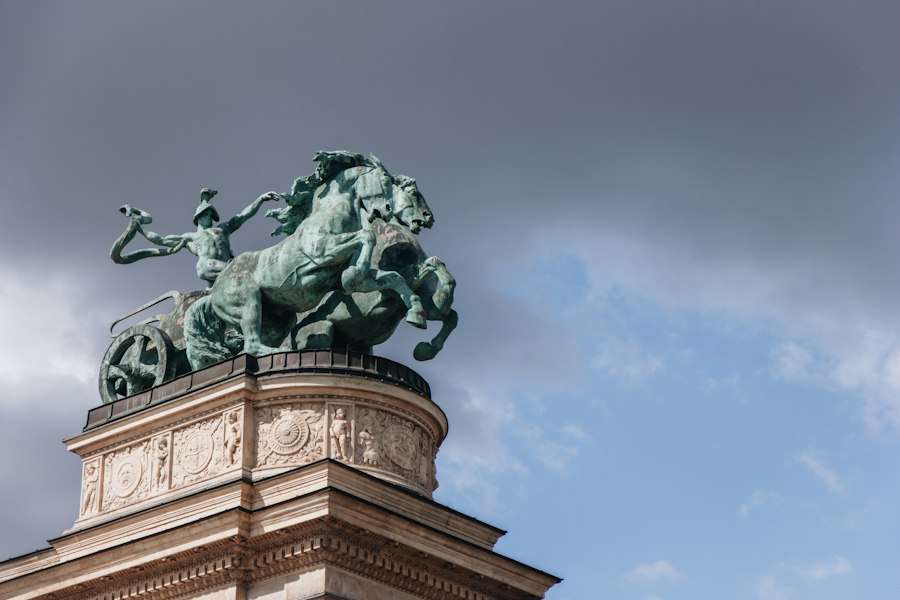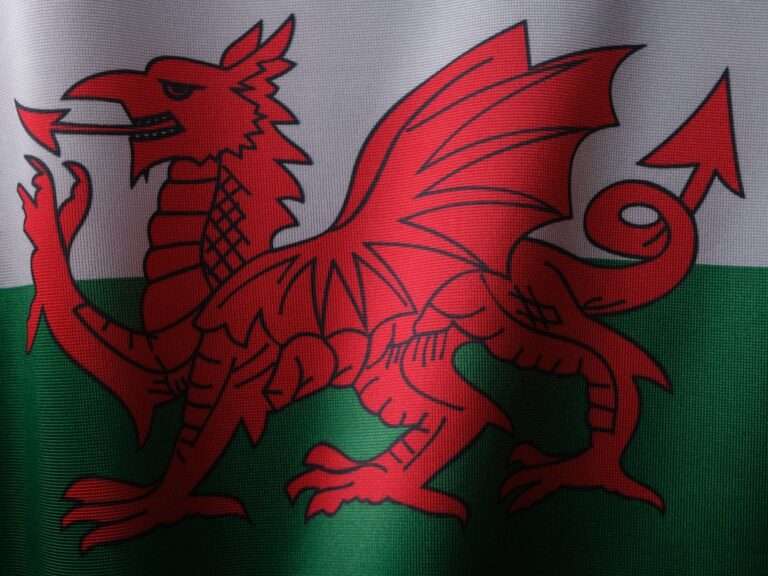The Power of Symbolism: How it Shapes the Hero’s Journey

Symbolism is a literary device that uses symbols, or objects, characters, or actions that represent something else, to convey a deeper meaning or message in a story. It is a powerful tool that allows authors to communicate complex ideas and emotions in a way that is accessible to readers. Symbolism adds depth and richness to literature, enhancing the reader’s understanding of the story and allowing them to engage with the text on a deeper level.
In literature, symbolism serves several important purposes. Firstly, it adds layers of meaning to the text, allowing readers to interpret the story in different ways and uncover hidden messages or themes. Symbols can represent abstract concepts such as love, death, or freedom, and by using these symbols, authors can explore these themes in a more nuanced and thought-provoking way.
Secondly, symbolism can create a sense of unity and coherence within a story. By using recurring symbols throughout the narrative, authors can tie different elements of the story together and create a cohesive whole. This can help readers make connections between different parts of the story and understand how they relate to each other.
Finally, symbolism can evoke emotional responses in readers. By using symbols that are associated with certain emotions or experiences, authors can tap into the reader’s own personal associations and create a powerful emotional impact. This can make the story more memorable and resonate with readers long after they have finished reading.
Key Takeaways
- Symbolism plays an important role in literature by adding depth and meaning to the story.
- The Hero’s Journey is a common narrative structure that involves a hero embarking on a quest.
- Archetypal symbols, such as the mentor and the threshold, are key elements in the Hero’s Journey.
- The call to adventure propels the hero forward and sets the quest in motion.
- Overcoming obstacles and undergoing transformation are crucial parts of the Hero’s Journey, made possible by the power of archetypal symbols.
Understanding the Hero’s Journey: A Brief Overview
The hero’s journey is a narrative structure that has been used in storytelling for centuries. It follows the journey of a hero as they embark on an adventure, face trials and challenges, and ultimately undergo a transformation. The hero’s journey is often seen as a metaphor for personal growth and self-discovery.
The hero’s journey typically consists of several stages. The first stage is the call to adventure, where the hero is presented with a challenge or opportunity that sets them on their journey. This is followed by the threshold, where the hero crosses into the unknown and leaves their familiar world behind. The hero then encounters a mentor, who provides guidance and wisdom. The hero faces trials and obstacles, which they must overcome in order to achieve their goal. Finally, the hero undergoes a transformation and returns to their ordinary world, forever changed by their experiences.
Many popular stories follow the hero’s journey structure. For example, in J.R.R. Tolkien’s “The Lord of the Rings,” Frodo Baggins is called to adventure when he is entrusted with the task of destroying the One Ring. He crosses the threshold into Mordor, guided by the wizard Gandalf as his mentor. Along the way, Frodo faces numerous trials and challenges, including battles with orcs and the temptation of the ring’s power. Ultimately, Frodo undergoes a transformation and returns to the Shire as a changed hobbit.
The Role of Archetypal Symbols in the Hero’s Journey
Archetypal symbols are universal symbols that are found across different cultures and time periods. They represent fundamental human experiences and emotions, and are often used in literature to convey deeper meanings or themes. Archetypal symbols can include objects, characters, or actions that have a symbolic significance.
In the hero’s journey, archetypal symbols play a crucial role in shaping the narrative and enhancing the reader’s understanding of the story. They help to establish a connection between the reader and the hero, as they tap into universal human experiences and emotions.
For example, one common archetypal symbol in literature is the journey itself. The act of embarking on a physical or metaphorical journey represents personal growth and self-discovery. It symbolizes the hero’s willingness to leave their comfort zone and face challenges in order to achieve their goal. The journey can also represent the hero’s quest for knowledge or enlightenment.
Another archetypal symbol often found in the hero’s journey is the mentor. The mentor is a wise and experienced figure who provides guidance and support to the hero. They often possess knowledge or skills that the hero lacks, and help to shape the hero’s journey by offering advice and encouragement. The mentor can represent the hero’s own inner wisdom or intuition, and serves as a source of inspiration and guidance.
The Symbolism of the Quest: The Hero’s Journey Begins
| Symbolism | The Hero’s Journey Begins |
|---|---|
| The Call to Adventure | The hero receives a call to leave their ordinary world and embark on a journey. |
| The Threshold | The hero crosses a threshold into a new world, leaving their old life behind. |
| The Mentor | The hero meets a mentor who provides guidance and support on their journey. |
| The Challenges | The hero faces a series of challenges and obstacles that test their strength and character. |
| The Abyss | The hero confronts their greatest fear or obstacle, often facing death or failure. |
| The Transformation | The hero undergoes a transformation, gaining new knowledge and skills that prepare them for the final battle. |
| The Atonement | The hero confronts their ultimate challenge and achieves victory, often restoring balance to their world. |
| The Return | The hero returns to their ordinary world, bringing back the knowledge and experience gained on their journey. |
The quest is a powerful symbol in literature, representing the hero’s journey and their pursuit of a goal or purpose. It is often the catalyst that sets the hero on their journey, as they are called to adventure and compelled to leave their ordinary world behind.
The quest can take many forms in literature, from a physical journey to a metaphorical search for meaning or identity. It can be a literal quest for a physical object, such as the Holy Grail in Arthurian legends, or it can be a more abstract quest for knowledge or self-discovery.
The quest symbolizes the hero’s desire for change and growth. It represents their willingness to leave behind what is familiar and comfortable in order to pursue something greater. The quest can also be seen as a test of the hero’s character and determination, as they face challenges and obstacles along the way.
Examples of quests in literature include Odysseus’ journey home in Homer’s “The Odyssey,” where he faces numerous trials and challenges in his attempt to return to his kingdom of Ithaca. Another example is Harry Potter’s quest to defeat Lord Voldemort in J.K. Rowling’s “Harry Potter” series, where he must overcome various obstacles and confront his own fears in order to fulfill his destiny.
The Call to Adventure: Archetypal Symbols that Propel the Hero Forward
The call to adventure is a crucial stage in the hero’s journey, as it is the moment when the hero is presented with a challenge or opportunity that sets them on their journey. It is often represented by an archetypal symbol that propels the hero forward and compels them to leave their ordinary world behind.
The call to adventure can take many forms in literature. It can be a literal call, such as a message or invitation, or it can be a more metaphorical call, such as a sudden realization or a change in circumstances. The call to adventure can also be represented by a symbolic object or event that triggers the hero’s journey.
For example, in C.S. Lewis’ “The Lion, the Witch, and the Wardrobe,” the call to adventure comes when Lucy Pevensie discovers a magical wardrobe that leads to the land of Narnia. The wardrobe serves as an archetypal symbol of the unknown and represents the gateway to a new world of adventure and discovery.
In J.R.R. Tolkien’s “The Hobbit,” the call to adventure comes when Bilbo Baggins is visited by the wizard Gandalf and invited to join a group of dwarves on a quest to reclaim their homeland from a dragon. The invitation serves as an archetypal symbol of opportunity and represents Bilbo’s chance to prove himself and embark on an epic adventure.
The Threshold: Crossing the Archetypal Threshold into the Unknown

The threshold is a significant stage in the hero’s journey, as it represents the moment when the hero crosses into the unknown and leaves their familiar world behind. It is often represented by an archetypal symbol that signifies the hero’s transition from one state of being to another.
Crossing the threshold can be a physical act, such as entering a new location or crossing a physical boundary. It can also be a metaphorical act, such as making a decision or committing to a course of action. The threshold represents the hero’s willingness to leave behind what is safe and comfortable in order to pursue their goal.
Examples of the threshold in literature include Alice’s journey through the looking glass in Lewis Carroll’s “Alice’s Adventures in Wonderland,” where she enters a fantastical world filled with strange and surreal characters. The looking glass serves as an archetypal symbol of transition and represents Alice’s passage into a new and unfamiliar reality.
In J.R.R. Tolkien’s “The Lord of the Rings,” the threshold is represented by the crossing of the River Anduin, which marks the boundary between the familiar lands of Middle-earth and the dangerous realm of Mordor. The crossing of the river serves as an archetypal symbol of the hero’s journey into the unknown and represents the beginning of Frodo Baggins’ quest to destroy the One Ring.
The Mentor: Archetypal Symbols of Guidance and Wisdom
The mentor is a key figure in the hero’s journey, as they provide guidance and wisdom to the hero as they navigate their journey. The mentor is often represented by an archetypal symbol that embodies these qualities and serves as a source of inspiration and support for the hero.
The mentor can take many forms in literature, from a wise old sage to a supernatural being. They often possess knowledge or skills that the hero lacks, and help to shape the hero’s journey by offering advice and encouragement. The mentor can also serve as a moral compass for the hero, guiding them on their path and helping them make important decisions.
Examples of mentors in literature include Gandalf in J.R.R. Tolkien’s “The Lord of the Rings,” who provides guidance and support to Frodo Baggins on his quest to destroy the One Ring. Gandalf is represented by the archetypal symbol of a wizard, which symbolizes his wisdom and magical abilities.
In J.K. Rowling’s “Harry Potter” series, Albus Dumbledore serves as a mentor to Harry Potter, offering guidance and wisdom as Harry navigates the challenges of being a young wizard. Dumbledore is represented by the archetypal symbol of an old and wise wizard, which symbolizes his knowledge and experience.
The Trials: Overcoming Obstacles with Archetypal Symbols
The trials are a crucial stage in the hero’s journey, as they represent the obstacles and challenges that the hero must overcome in order to achieve their goal. The trials are often represented by archetypal symbols that symbolize the hero’s inner struggles and external conflicts.
The trials can take many forms in literature, from physical battles to moral dilemmas. They often test the hero’s character and determination, and force them to confront their fears and weaknesses. The trials can also serve as a means of character development, as the hero learns important lessons and grows stronger through their experiences.
Examples of trials in literature include the battle between good and evil in J.R.R. Tolkien’s “The Lord of the Rings,” where Frodo Baggins and his companions face numerous challenges and obstacles on their quest to destroy the One Ring. The trials are represented by archetypal symbols such as battles with orcs, encounters with dangerous creatures, and tests of loyalty and courage.
In Suzanne Collins’ “The Hunger Games,” the trials are represented by the deadly arena where the participants must fight for their lives. The arena serves as an archetypal symbol of the hero’s struggle against oppressive forces, and represents the physical and emotional challenges that they must overcome in order to survive.
The Transformation: The Power of Archetypal Symbols in the Hero’s Journey
The transformation is a pivotal stage in the hero’s journey, as it represents the hero’s growth and change as a result of their experiences. The transformation is often represented by archetypal symbols that symbolize the hero’s inner journey and the lessons they have learned along the way.
The transformation can take many forms in literature, from a physical change to a change in mindset or perspective. It often represents the hero’s evolution from a state of ignorance or immaturity to a state of wisdom or enlightenment. The transformation can also symbolize the hero’s integration of their shadow self, or the acceptance and integration of their flaws and weaknesses.
Examples of transformation in literature include the metamorphosis of Gregor Samsa in Franz Kafka’s “The Metamorphosis,” where Gregor wakes up one morning to find himself transformed into a giant insect. The transformation serves as an archetypal symbol of Gregor’s alienation and isolation, and represents his gradual acceptance of his new identity.
In J.K. Rowling’s “Harry Potter” series, Harry undergoes a transformation from an orphaned boy with no magical abilities to a powerful wizard and leader. The transformation is represented by archetypal symbols such as the sorting hat, which determines which house Harry belongs to at Hogwarts School of Witchcraft and Wizardry, and the mirror of Erised, which shows Harry his deepest desires.
The Enduring Impact of Archetypal Symbolism in Literature and Beyond
In conclusion, archetypal symbolism plays a crucial role in literature, particularly in the hero’s journey narrative structure. Archetypal symbols enhance the reader’s understanding of the story by adding layers of meaning and depth. They help to establish a connection between the reader and the hero, as they tap into universal human experiences and emotions.
Archetypal symbols are not limited to literature; they can also be found in other forms of media such as film, television, and art. They have an enduring impact on culture and society, as they reflect and shape our collective understanding of the human experience.
By using archetypal symbols in their work, authors and artists can create stories that resonate with readers and viewers on a deep and meaningful level. They can explore complex themes and ideas in a way that is accessible and relatable, and leave a lasting impression on their audience.
In conclusion, symbolism is a powerful tool in literature that enhances the reader’s understanding of the story. The hero’s journey is a narrative structure that follows the journey of a hero as they undergo personal growth and transformation. Archetypal symbols play a crucial role in the hero’s journey, representing universal human experiences and emotions. They help to shape the narrative and enhance the reader’s understanding of the story. The enduring impact of archetypal symbolism can be seen in literature, as well as other forms of media, and has a profound influence on culture and society.
If you’re interested in exploring the symbolism of animals, you might find the article on the Symbolism Hub website about the symbolism of a snake intriguing. Snakes have long been associated with various meanings and interpretations across different cultures and belief systems. This article delves into the symbolic significance of snakes and how they can represent transformation, healing, and even deception. To learn more about the symbolism of a snake, check out this link.
FAQs
What is symbolism in literature?
Symbolism in literature is the use of symbols to represent ideas or qualities beyond their literal meaning. It is a literary device that authors use to convey a deeper meaning or message in their work.
Who is a hero in literature?
A hero in literature is a character who exhibits courage, strength, and selflessness in the face of adversity. They often go on a journey or quest to achieve a goal, and their actions inspire others.
What is the significance of symbolism in literature?
Symbolism in literature adds depth and complexity to a story, allowing readers to interpret the meaning behind the symbols. It can also create a sense of unity and coherence in a work, tying together different themes and ideas.
What are some common symbols used in literature?
Common symbols used in literature include animals (such as the snake or the eagle), colors (such as red or black), objects (such as a sword or a rose), and natural elements (such as water or fire).
How does symbolism contribute to the portrayal of a hero in literature?
Symbolism can contribute to the portrayal of a hero in literature by highlighting their virtues and qualities. For example, a hero may be associated with the color white, which symbolizes purity and goodness. Additionally, symbols can be used to represent the hero’s journey or quest, such as a sword representing their strength and determination.





